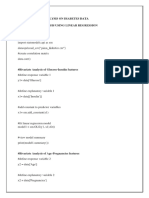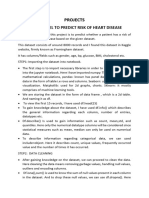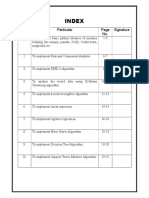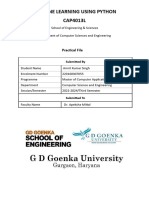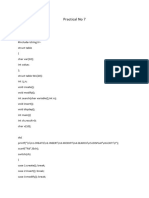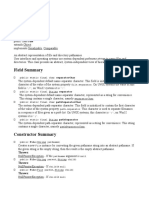0% found this document useful (0 votes)
3 views25 pagesCode and Outputs
The document outlines various practical exercises in R programming for data analytics, covering topics such as basic statistics, data visualization, linear regression, logistic regression, k-Nearest Neighbors, ANOVA, Naive Bayes, market basket analysis, and decision trees. Each practical includes code snippets demonstrating the implementation of these techniques using different datasets. The document serves as a comprehensive guide for students to learn and apply data analysis methods using R.
Uploaded by
deveshmande2405Copyright
© © All Rights Reserved
We take content rights seriously. If you suspect this is your content, claim it here.
Available Formats
Download as DOCX, PDF, TXT or read online on Scribd
0% found this document useful (0 votes)
3 views25 pagesCode and Outputs
The document outlines various practical exercises in R programming for data analytics, covering topics such as basic statistics, data visualization, linear regression, logistic regression, k-Nearest Neighbors, ANOVA, Naive Bayes, market basket analysis, and decision trees. Each practical includes code snippets demonstrating the implementation of these techniques using different datasets. The document serves as a comprehensive guide for students to learn and apply data analysis methods using R.
Uploaded by
deveshmande2405Copyright
© © All Rights Reserved
We take content rights seriously. If you suspect this is your content, claim it here.
Available Formats
Download as DOCX, PDF, TXT or read online on Scribd
/ 25











